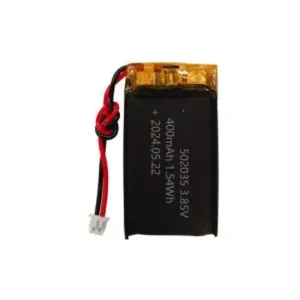3.85 V Li-ion Battery(Upper voltage 4.4V)

Explore 3.85V Li-ion batteries , ideal for lightweight devices like fitness trackers, medical equipment, and wireless sensors. With high energy density and reliable performance, these batteries deliver precision and longevity. iRay energy provides high-quality solutions for optimal compatibility and durability. Choose yours today for dependable power.
FAQs
Why is the 3.85 V battery called a "high-voltage Li-ion battery"?
The nominal voltage of conventional Li-ion batteries is 3.6/3.7 V. By using new cathode materials and electrolyte systems, the 3.85 V battery raises the voltage platform to 3.85 V, with a charging upper limit of 4.4 V, which is why it is called a “high-voltage battery system.”
Can the 3.85 V battery reduce the number of series and parallel cells in a battery pack?
Yes. Since each cell has a higher voltage, the number of series cells needed to meet a given output voltage can be reduced, lowering BMS complexity and improving the stability and efficiency of the battery pack.
What is the relationship between 3.85 V batteries and solid-state batteries?
The 3.85 V battery is still a liquid Li-ion battery, but research advancements—such as electrolyte additives and high-voltage cathode materials—lay the groundwork for high-voltage applications in future solid-state batteries.
How does the energy storage efficiency of 3.85 V batteries compare to traditional 3.7 V batteries?
For the same capacity, 3.85 V batteries reduce energy loss by approximately 8%–15%, resulting in higher overall energy storage efficiency, especially during prolonged high-power output.
Does a 3.85 V battery require a dedicated battery management system (BMS)?
Yes. With a charging upper limit of 4.4 V, a BMS capable of high-voltage monitoring and protection is required; otherwise, there is a risk of overcharging.
What advantages does this battery offer in slim and lightweight device design?
With higher energy density, manufacturers can use thinner batteries while maintaining battery life, making products lighter and more compact—ideal for ultra-thin laptops and foldable smartphones.
What precautions are needed for long-term storage of 3.85 V batteries?
It is recommended to store the battery at around 3.8 V, with ambient temperatures between 15℃ and 25℃. Avoid storing fully charged or deeply discharged batteries for long periods to preserve cycle life.
Which industries are seeing the fastest growth in demand for 3.85 V batteries?
Consumer electronics (high-end smartphones and tablets), wearable devices, drones, AR/VR equipment, and portable medical devices are the fastest-growing sectors, all of which demand lightweight designs and high energy density.



